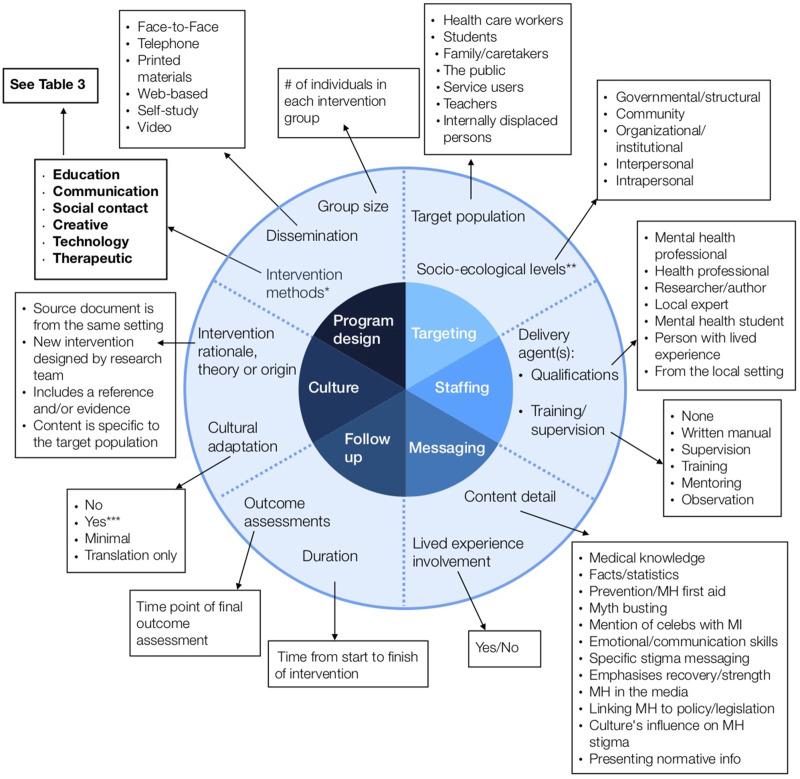Fig. 2.
Framework of core components of anti-stigma interventions in low- and middle- income countries. The inner circle represents six overarching ‘categories’; the outer circle represents ‘components’ within each category; the boxes represent ‘sub-components’ within each component. Intervention methods are further broken down into ‘elements’ in Table 3. This framework of core components of anti-stigma interventions was developed by the authors as a composite of other analysis frames (Heijnders & Van Der Meij, 2006; Corrigan et al., 2013). *Intervention methods: the six sub-components are further coded into 32 elements; see Table 3. **Socio-ecological levels: based on Heijnders' framework (Heijnders & Van Der Meij, 2006). ***Cultural adaptation: ‘yes’ = local beliefs/culture are taken into account; the intervention at least partially originated from the local context; or, the intervention was piloted/field-tested

